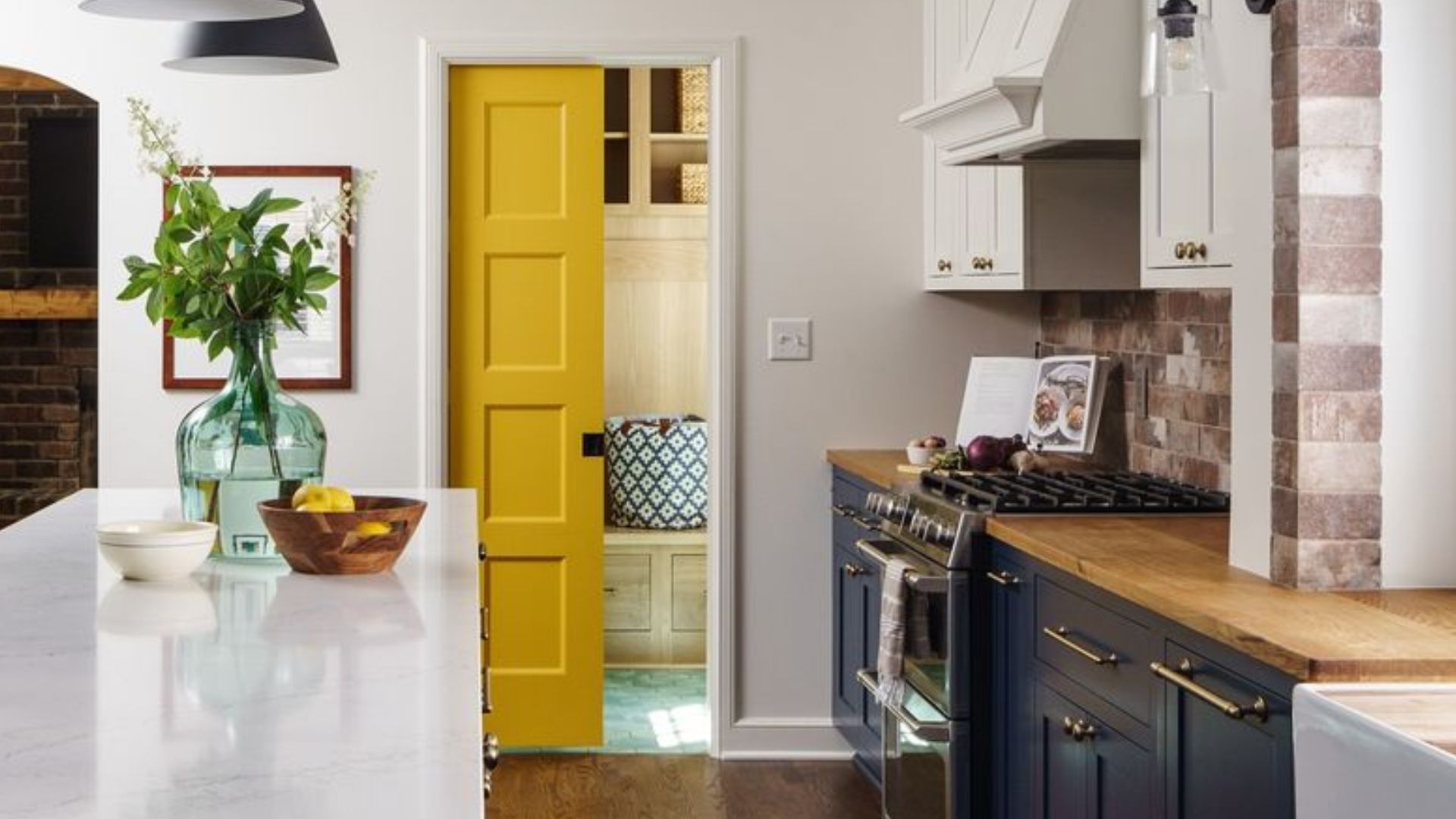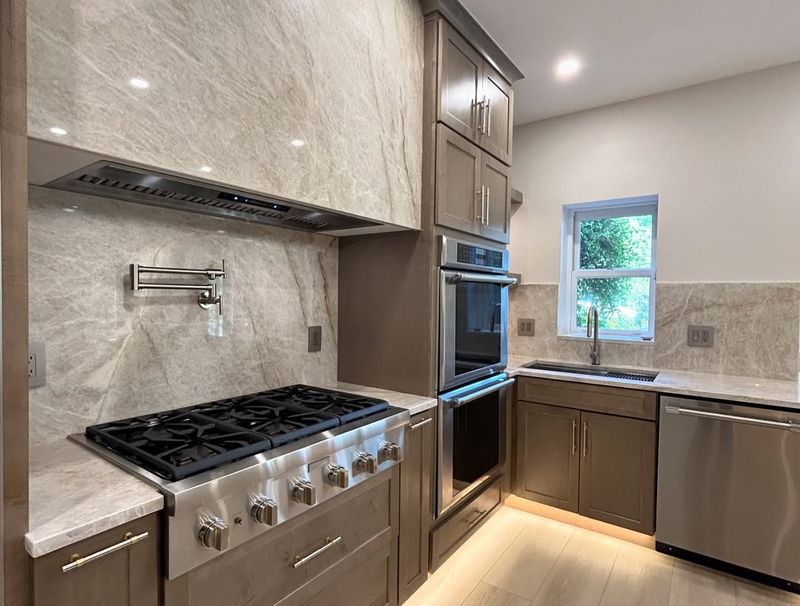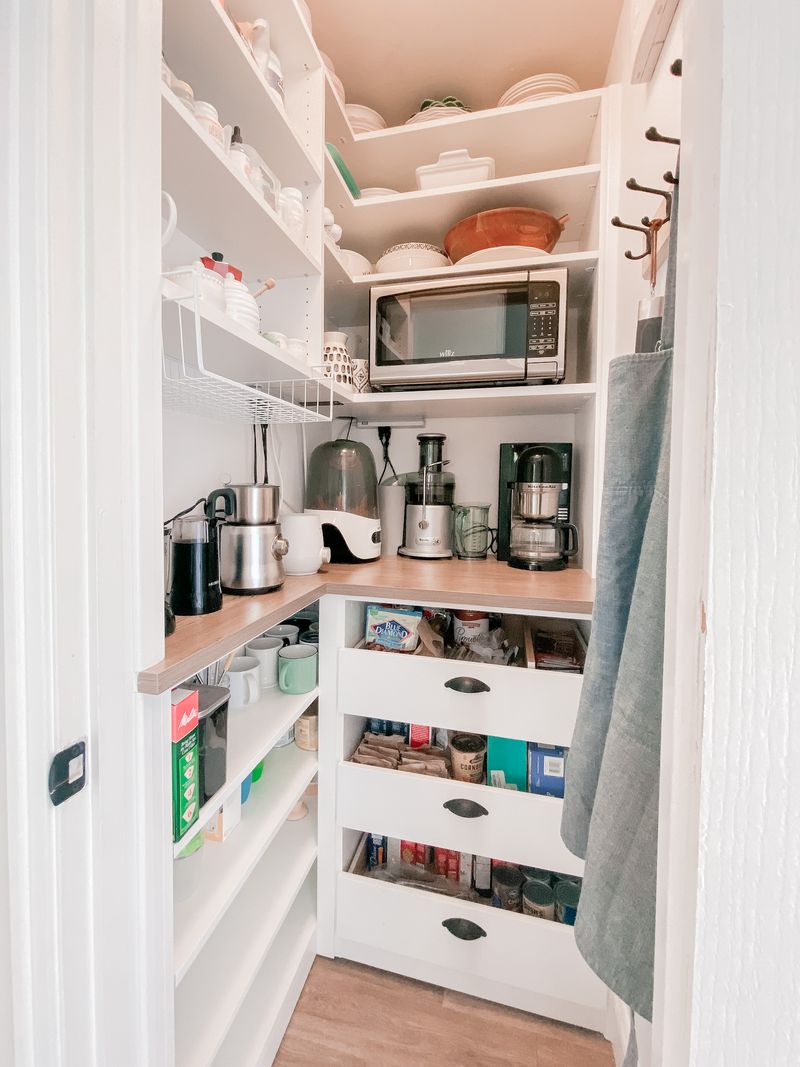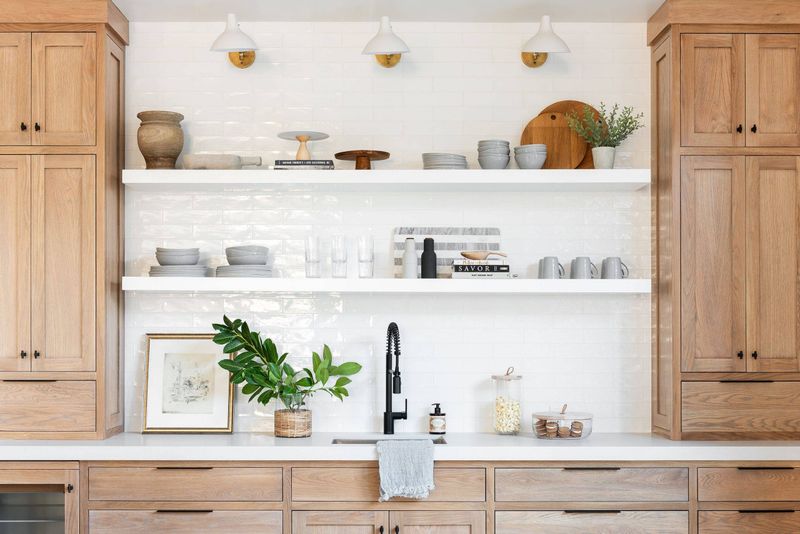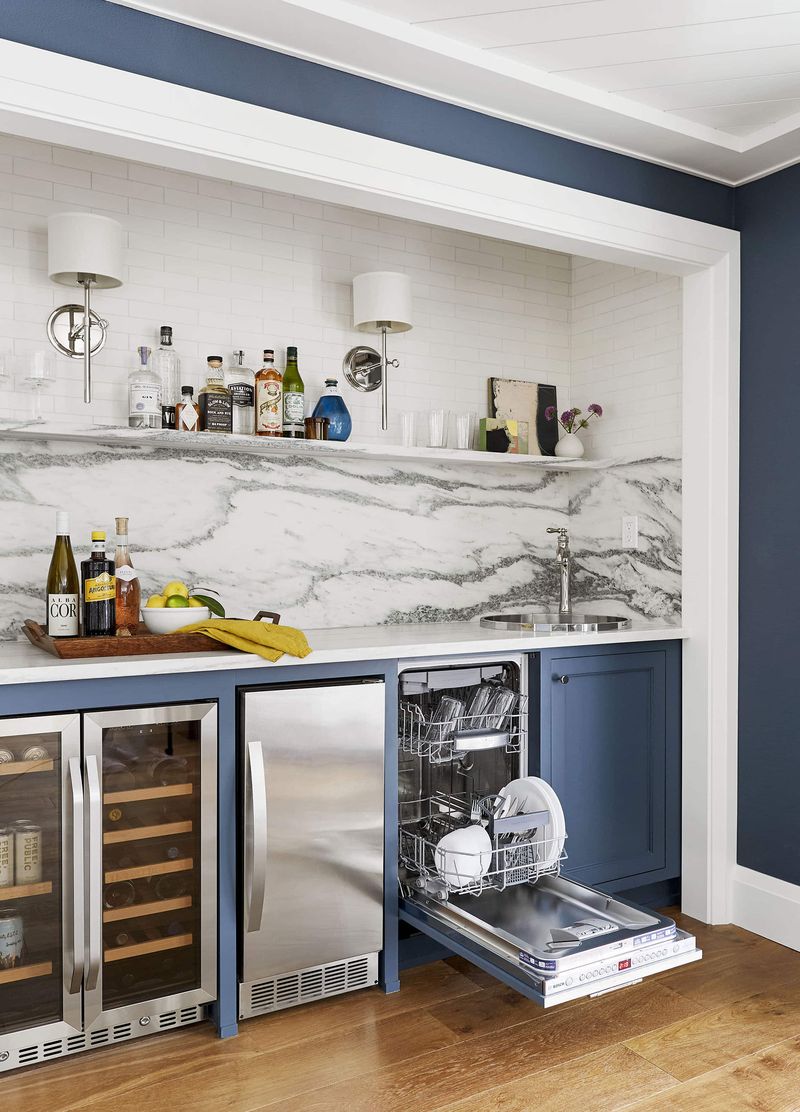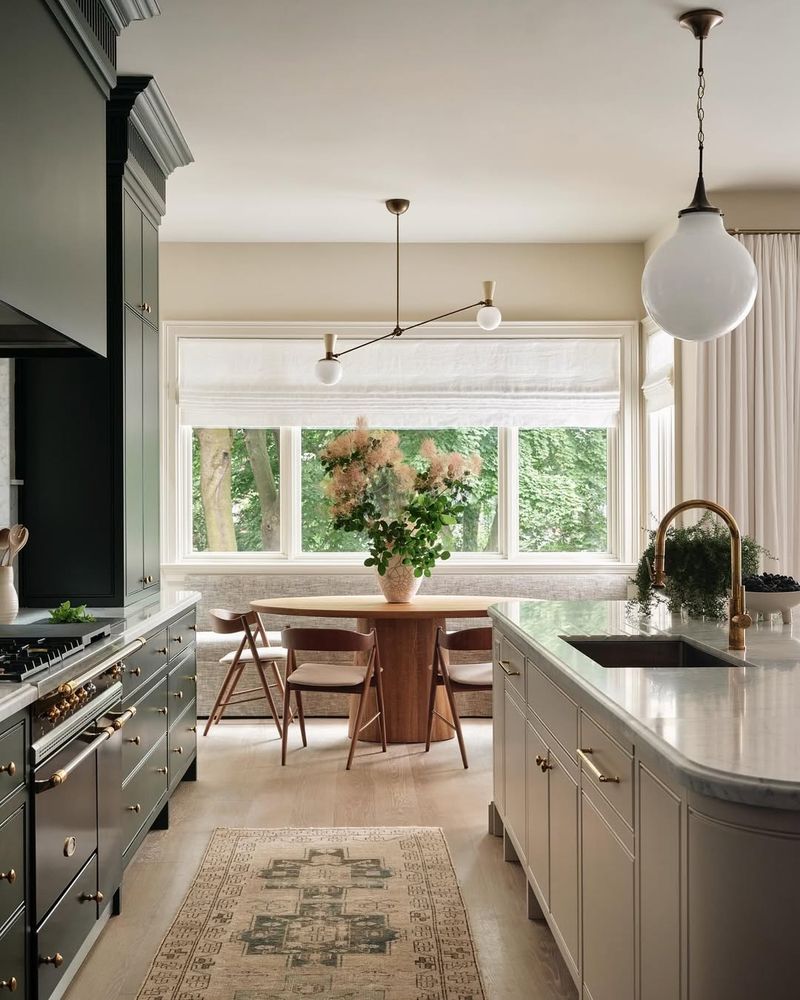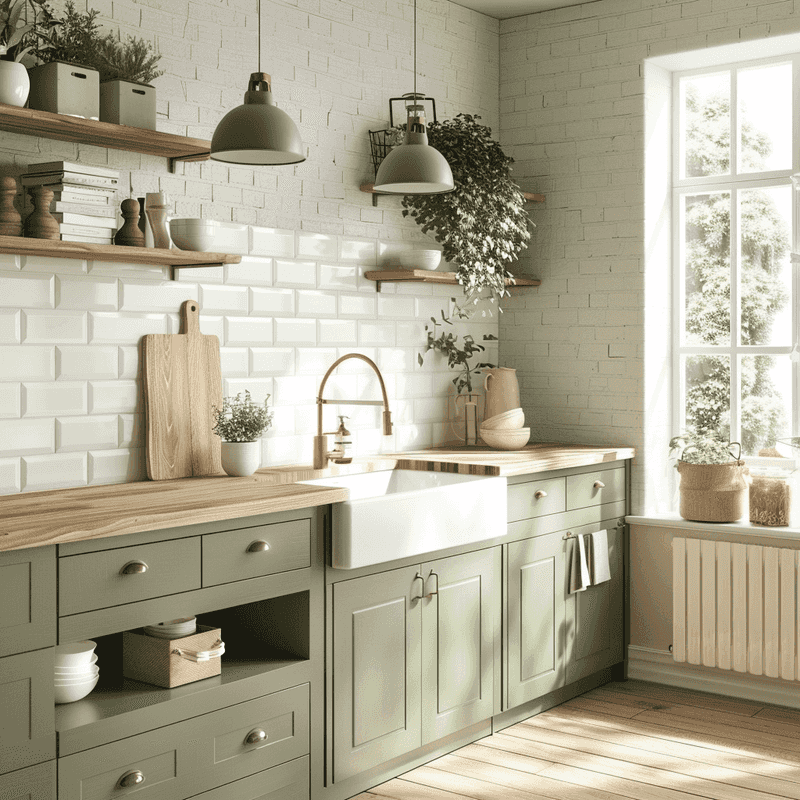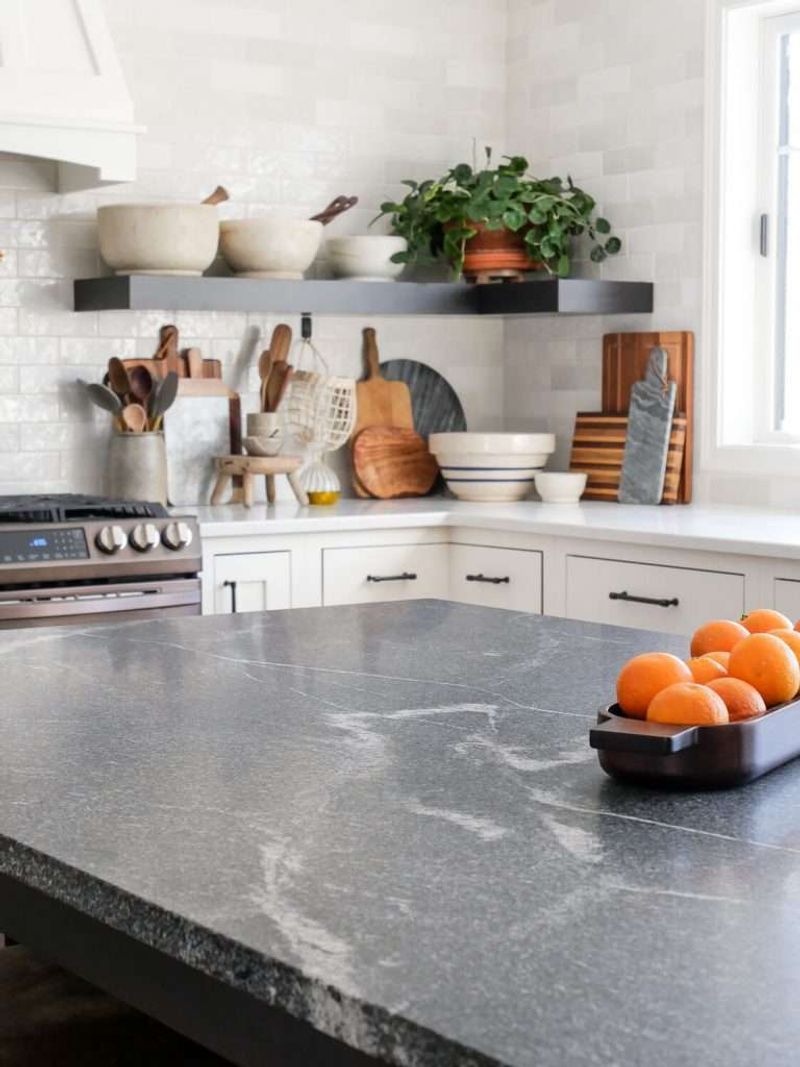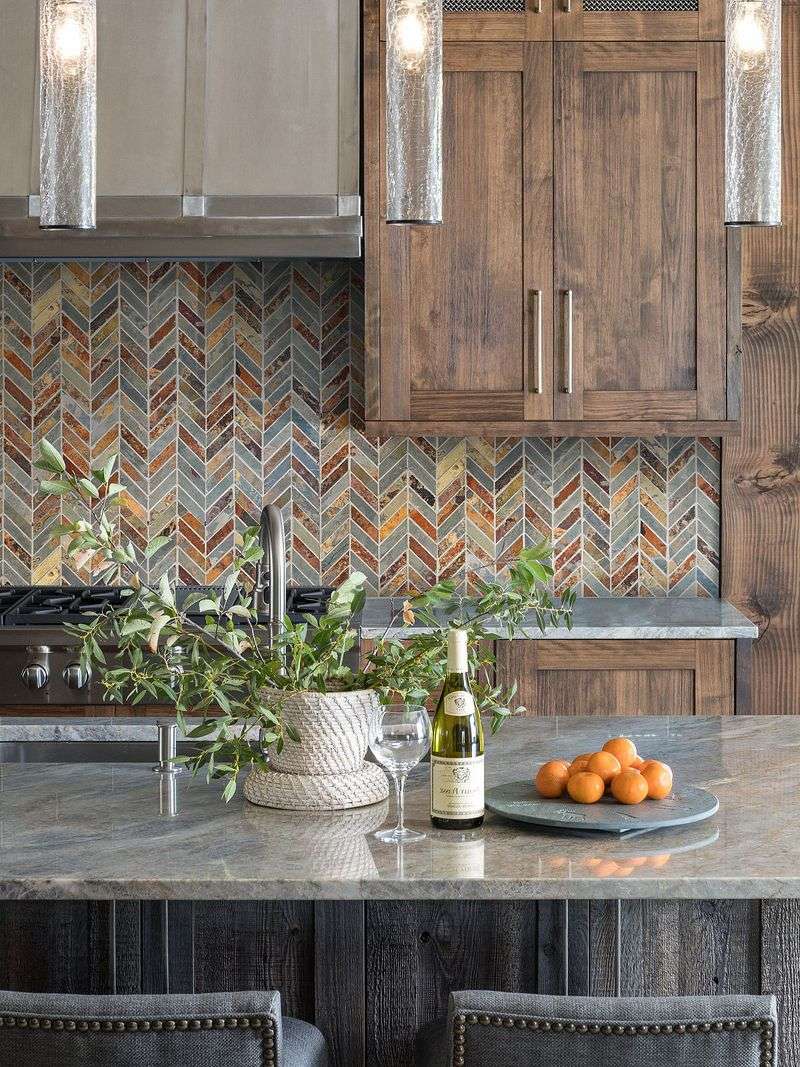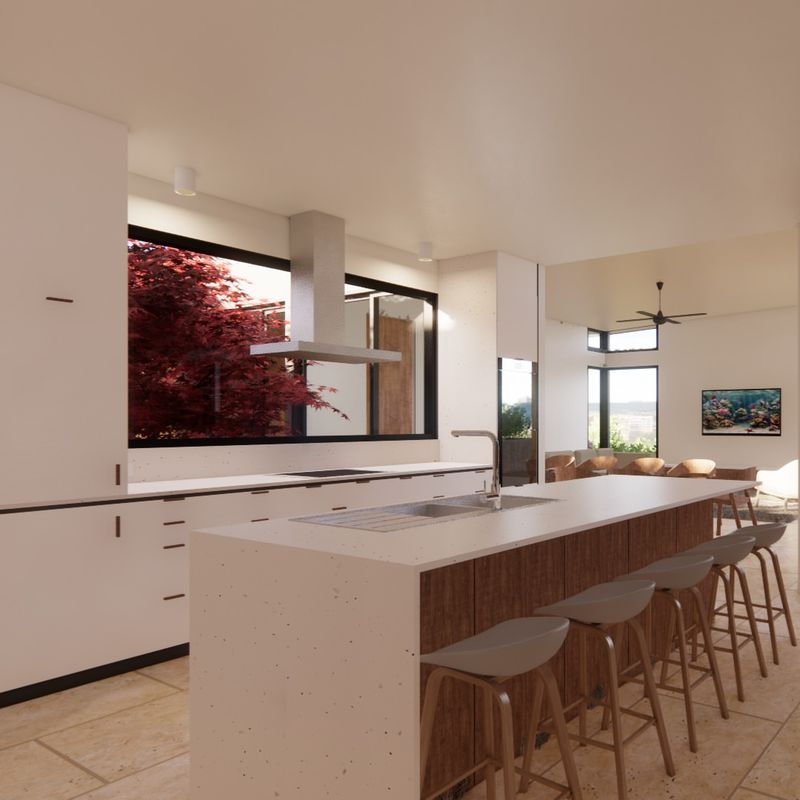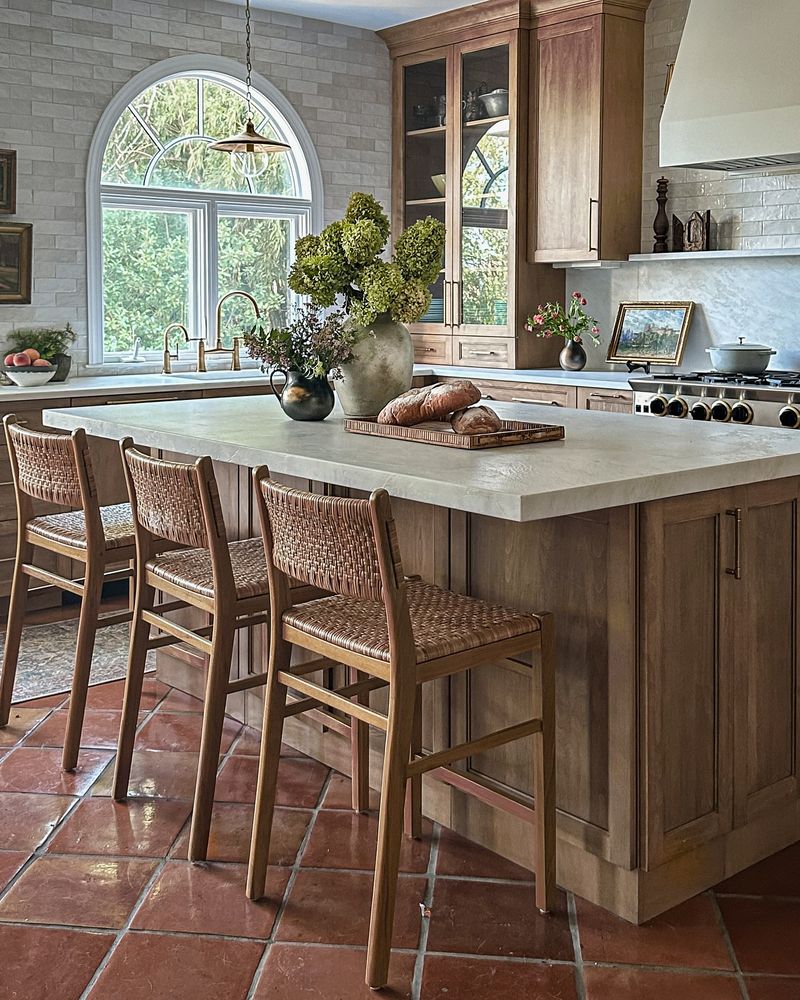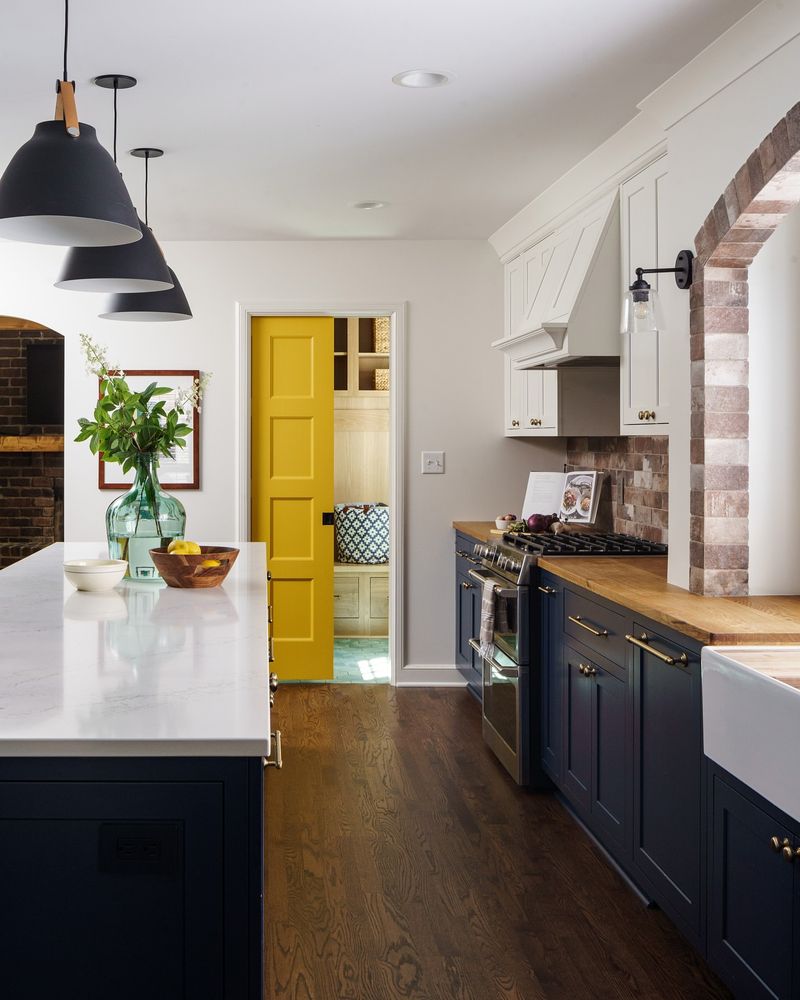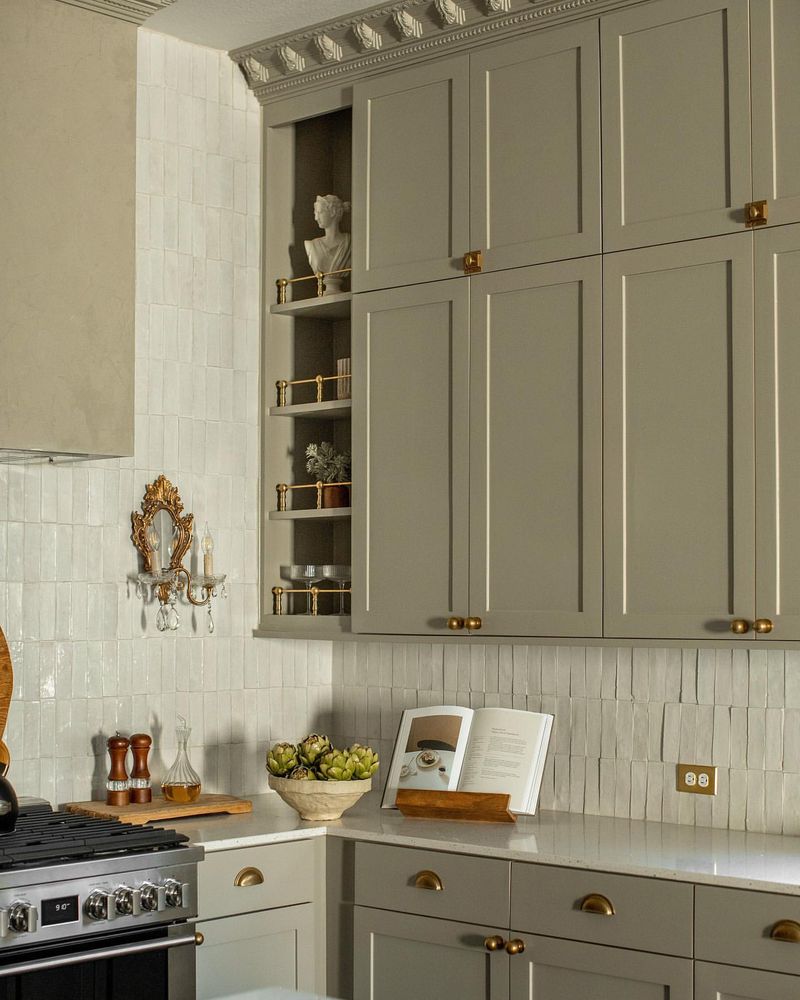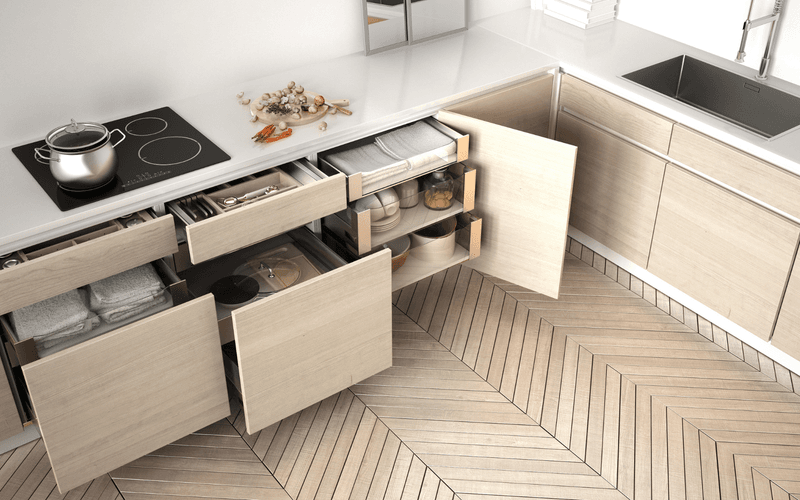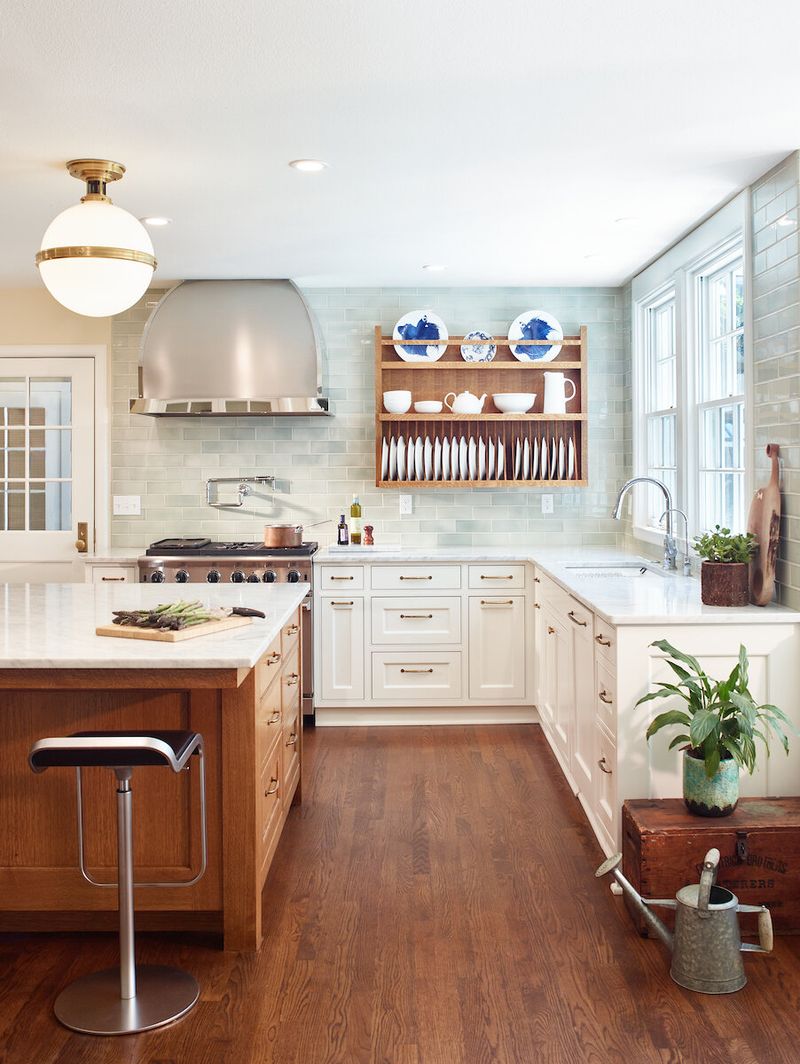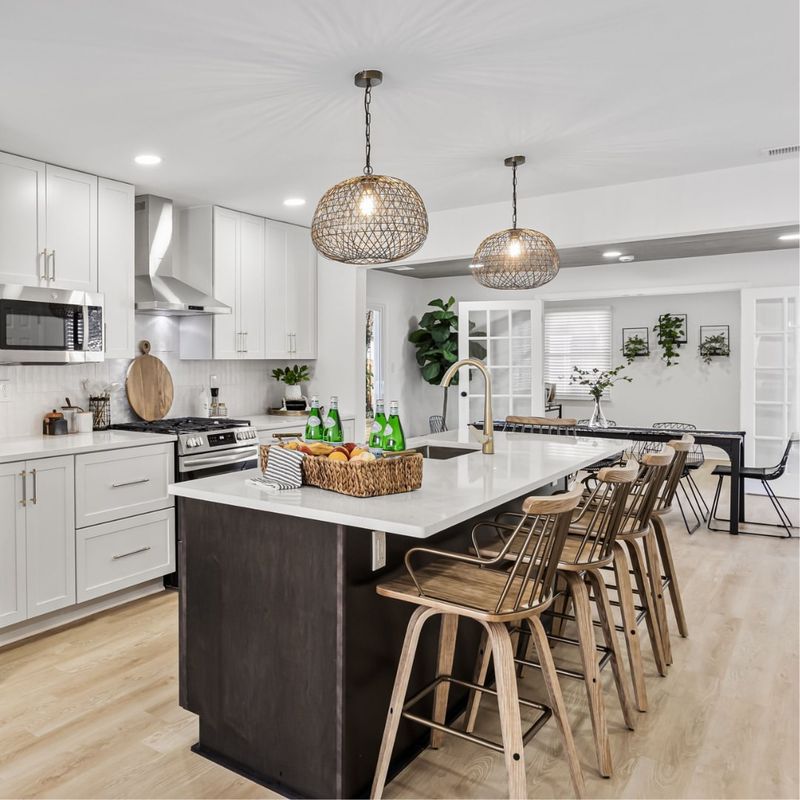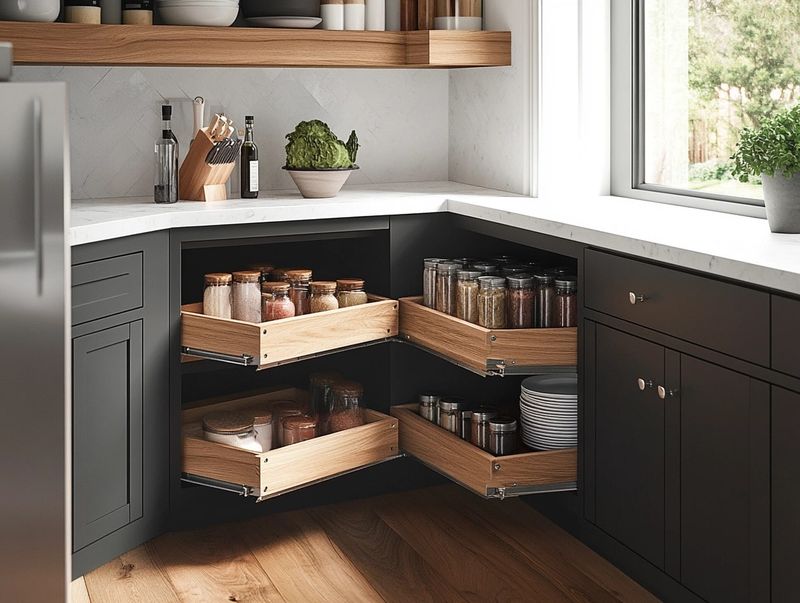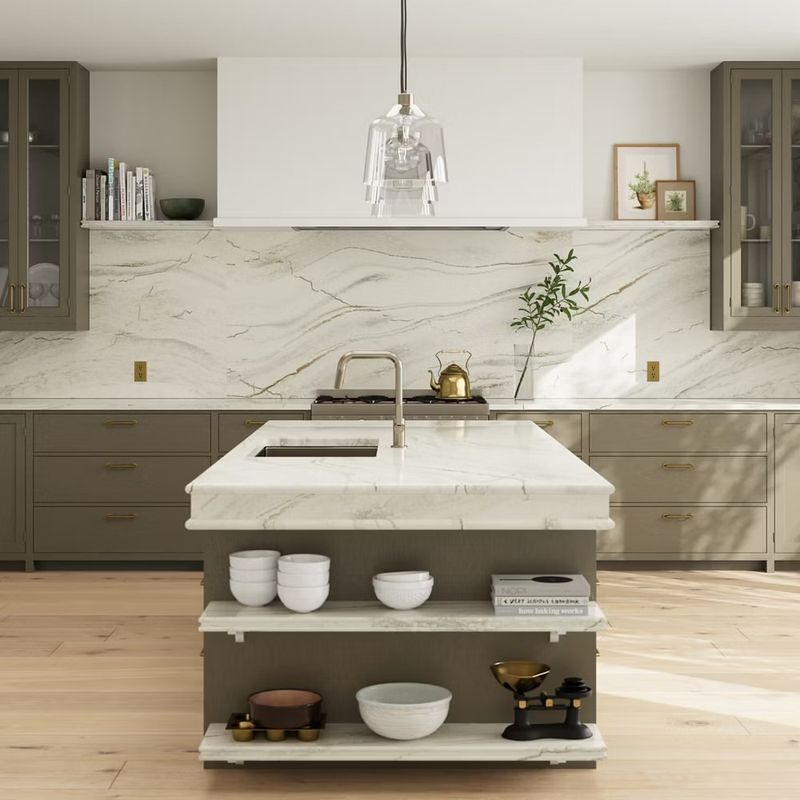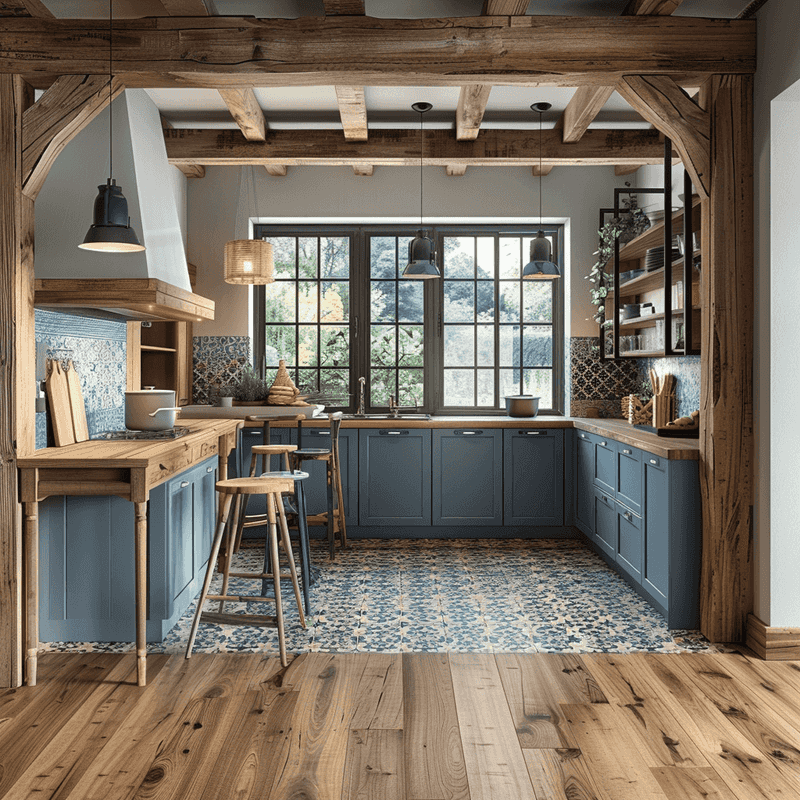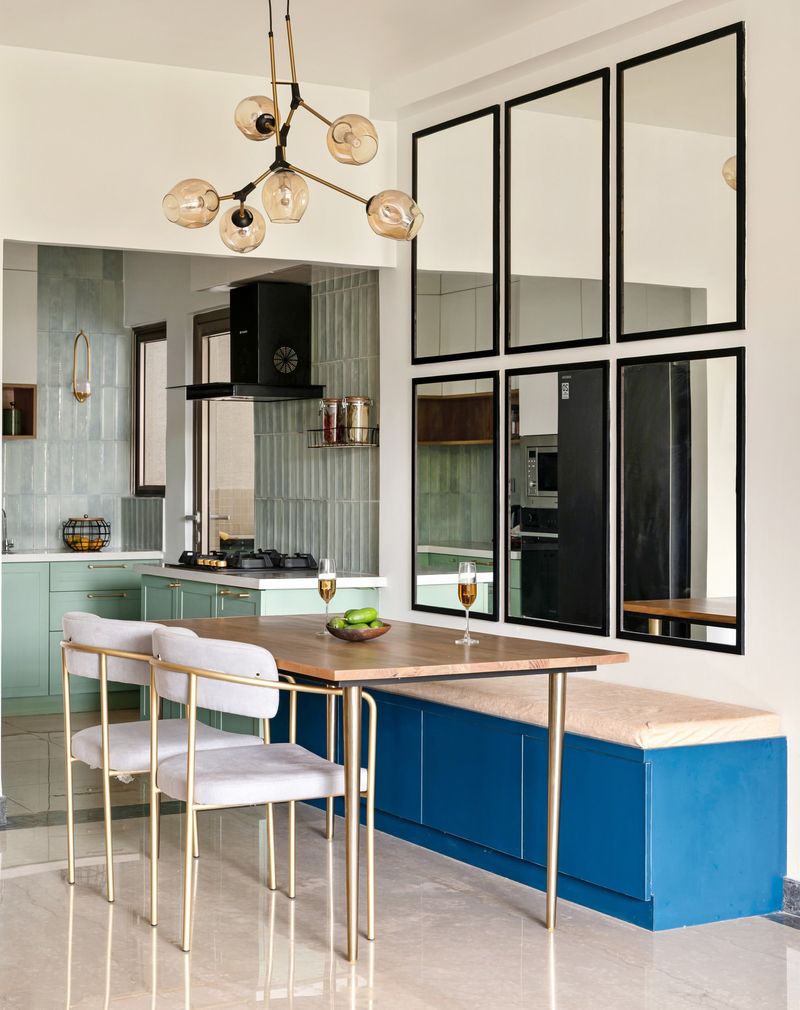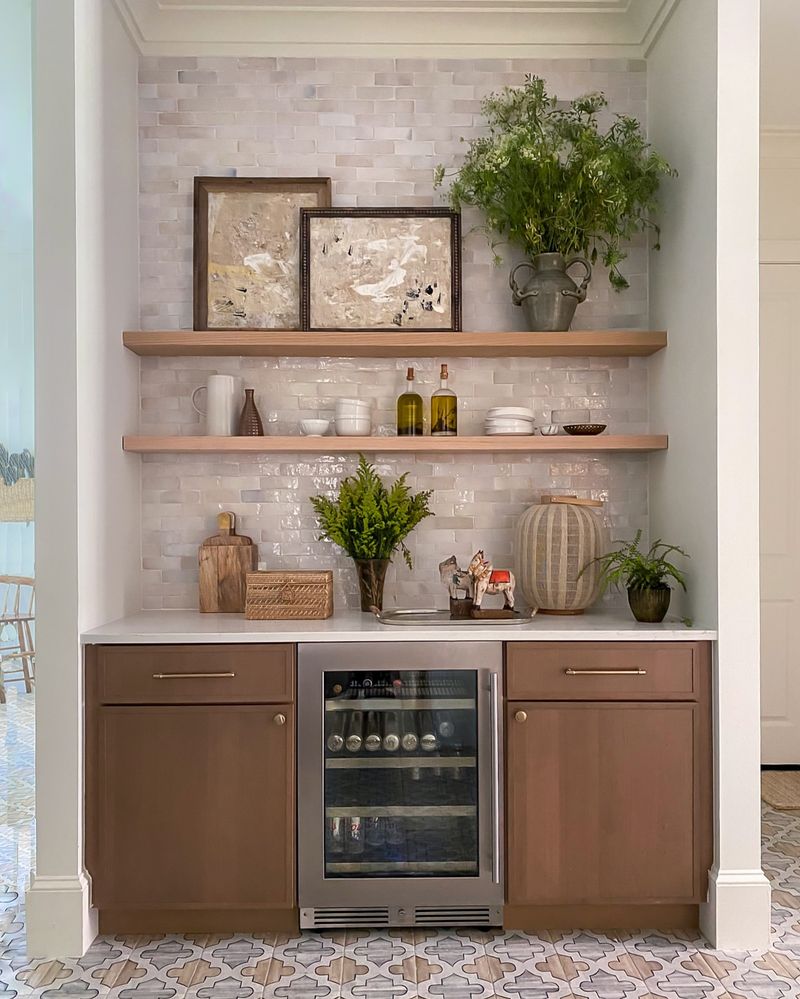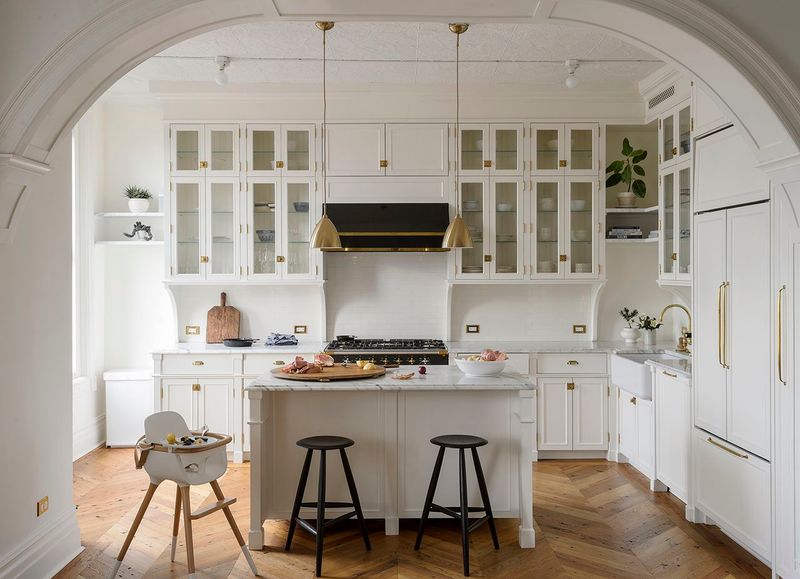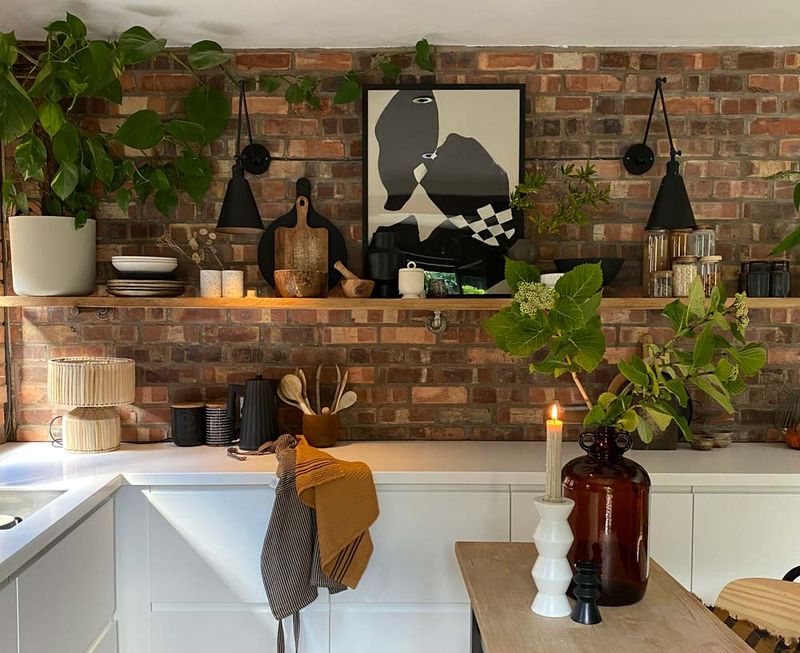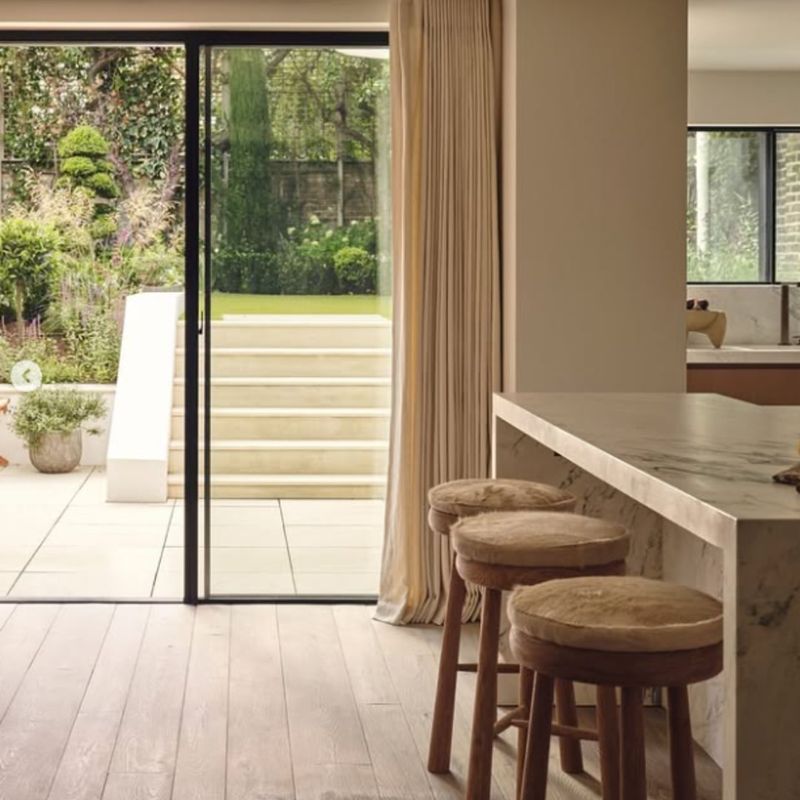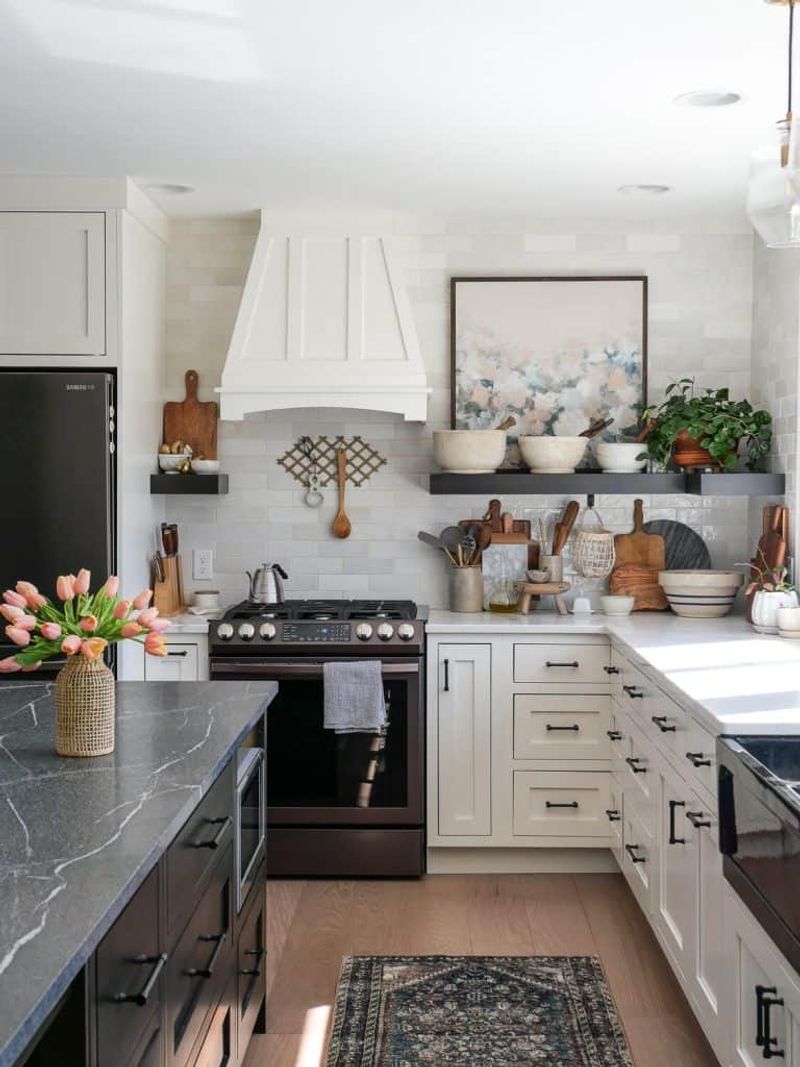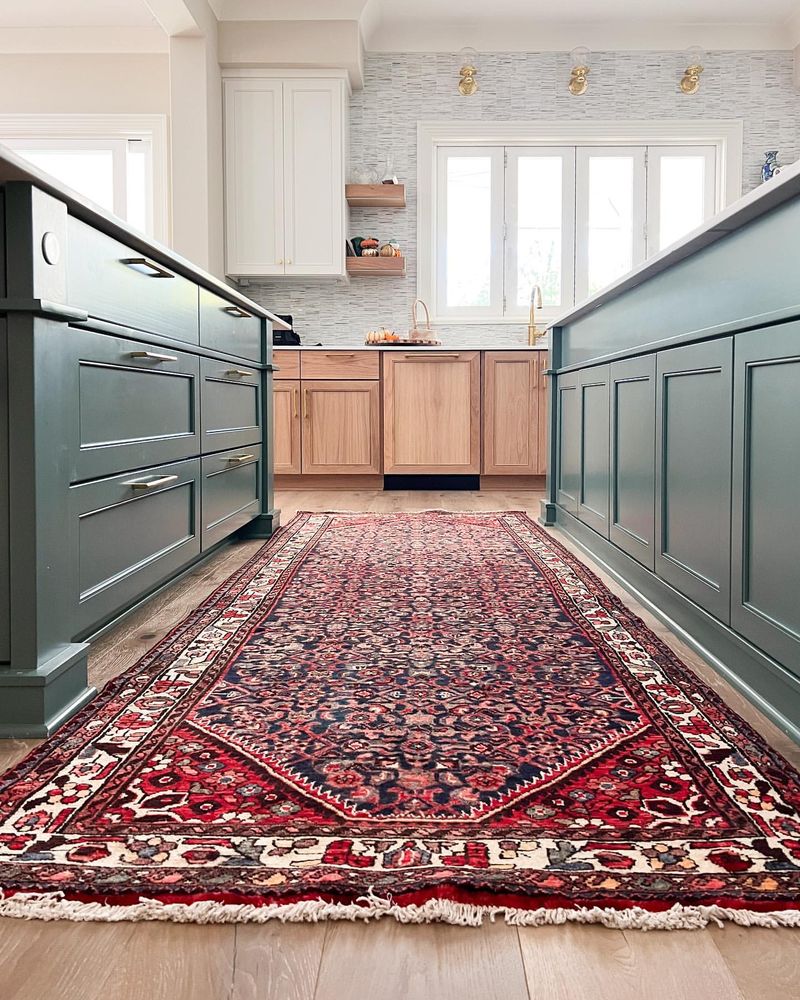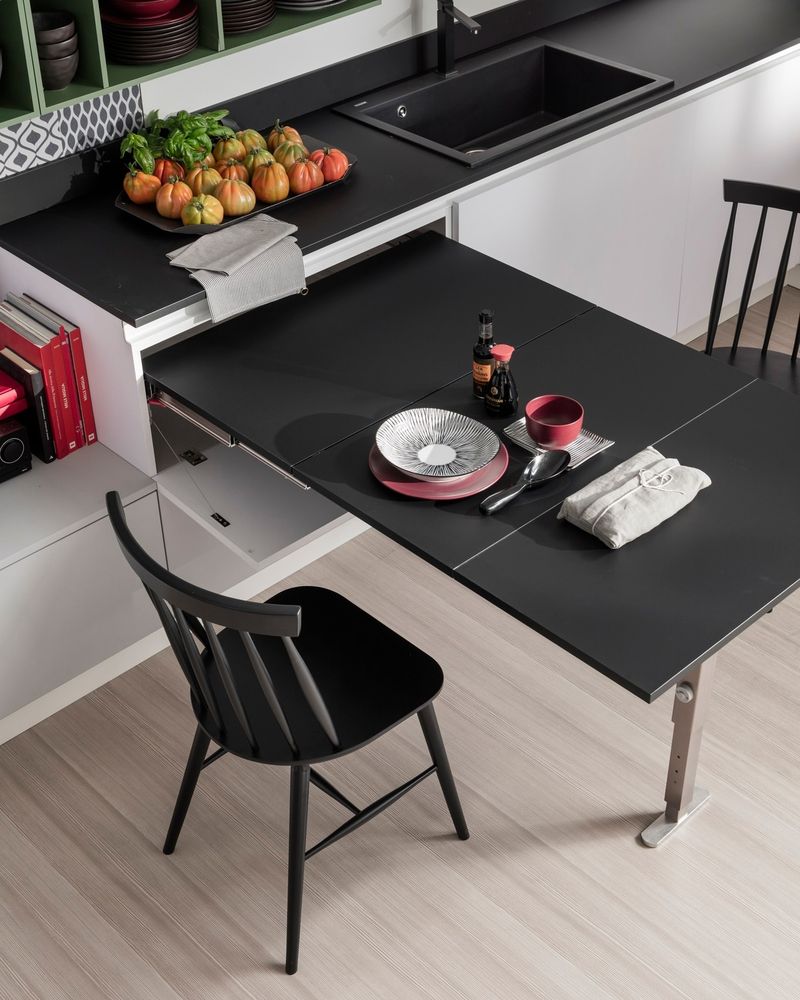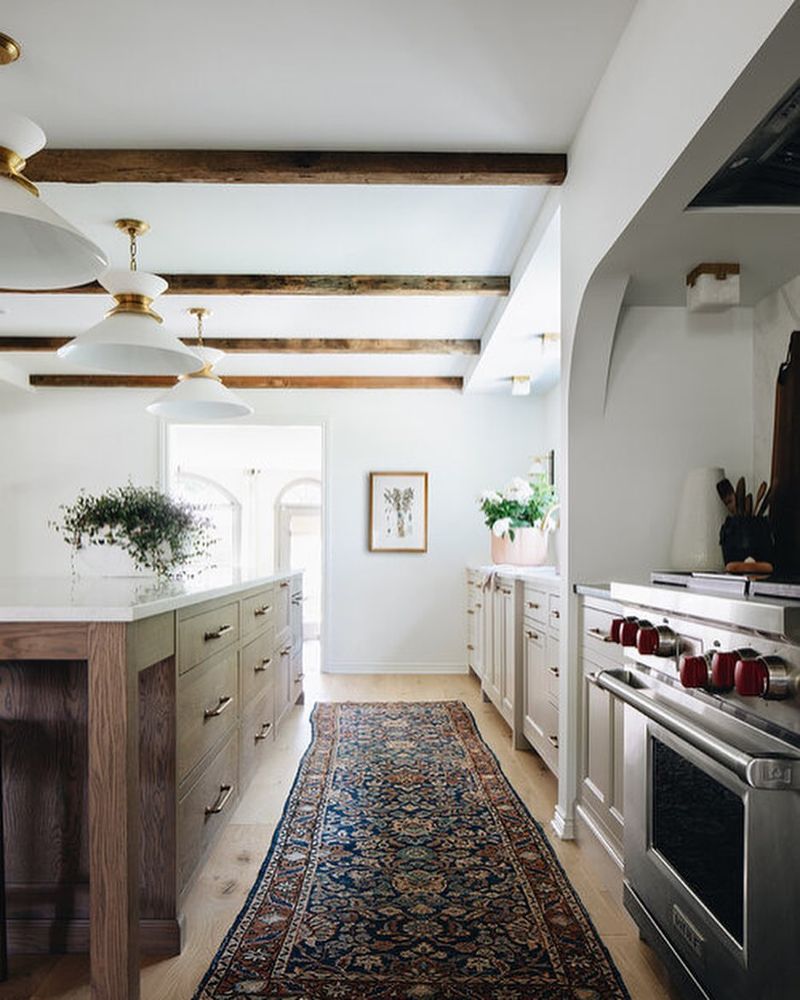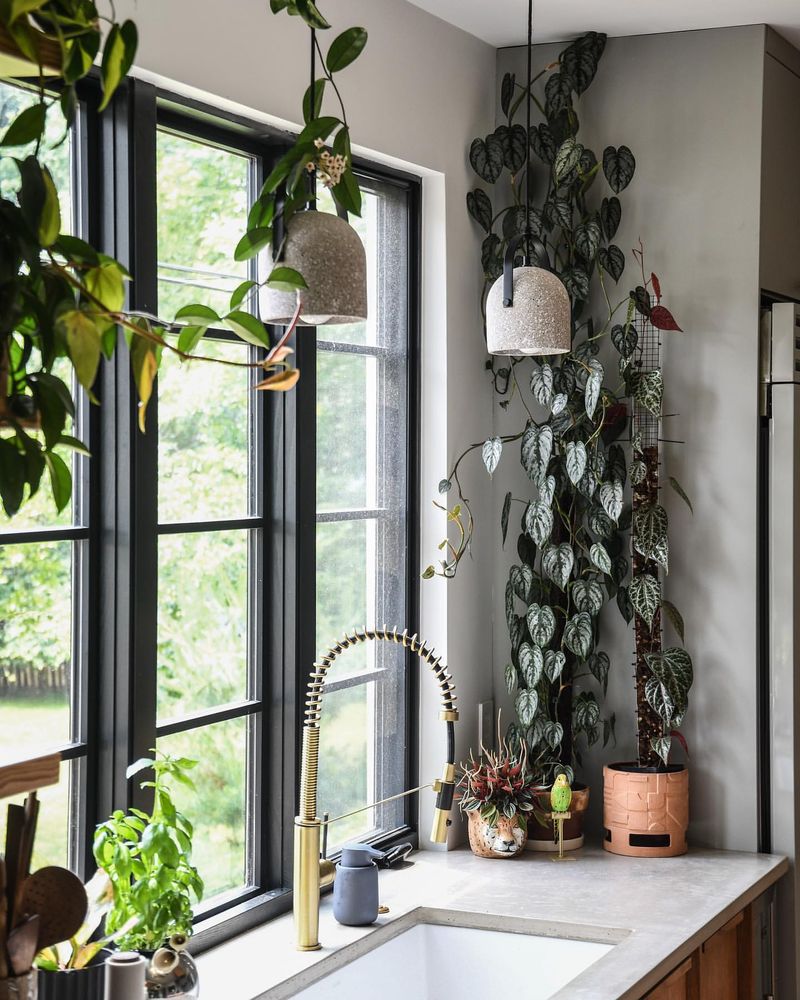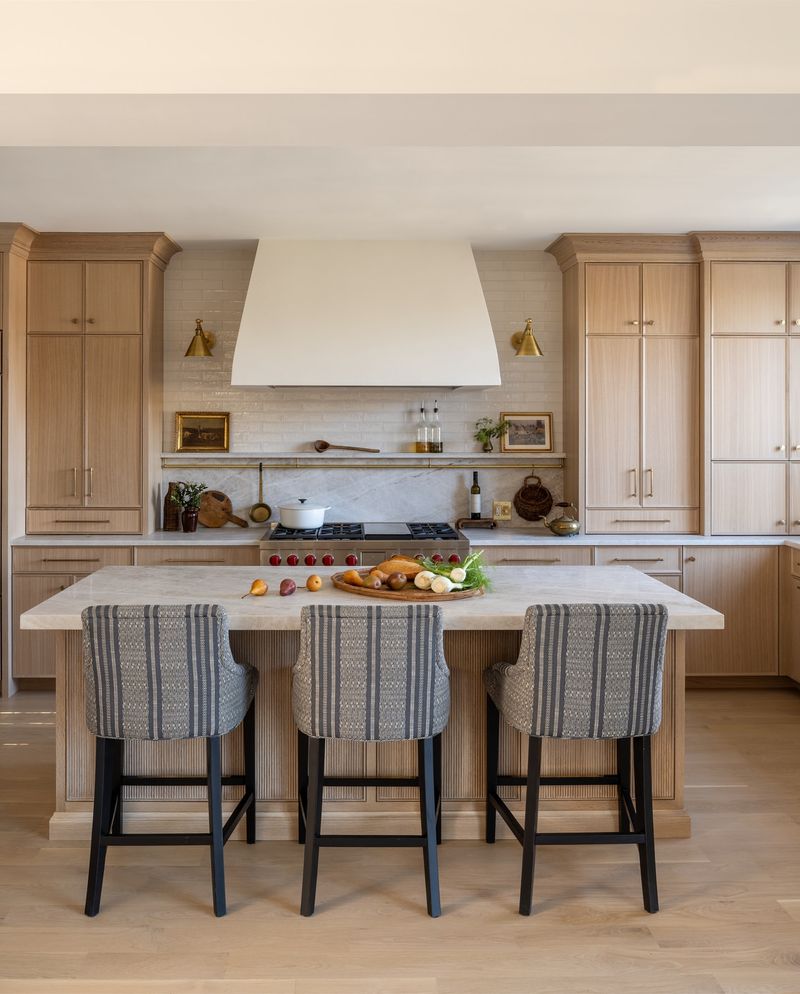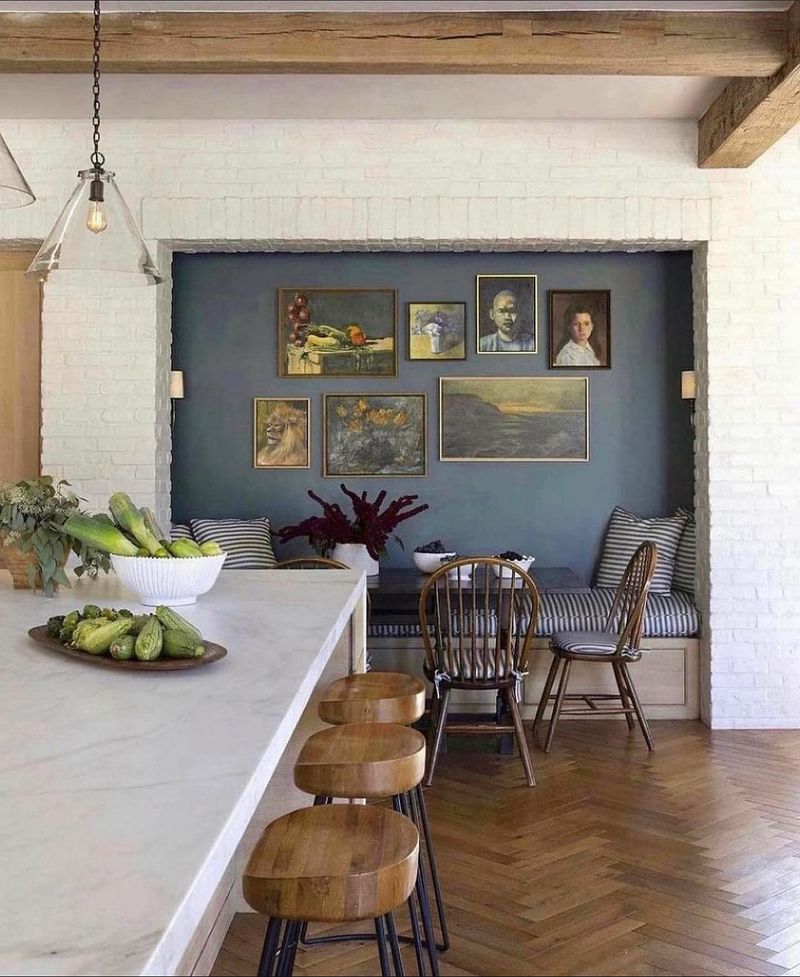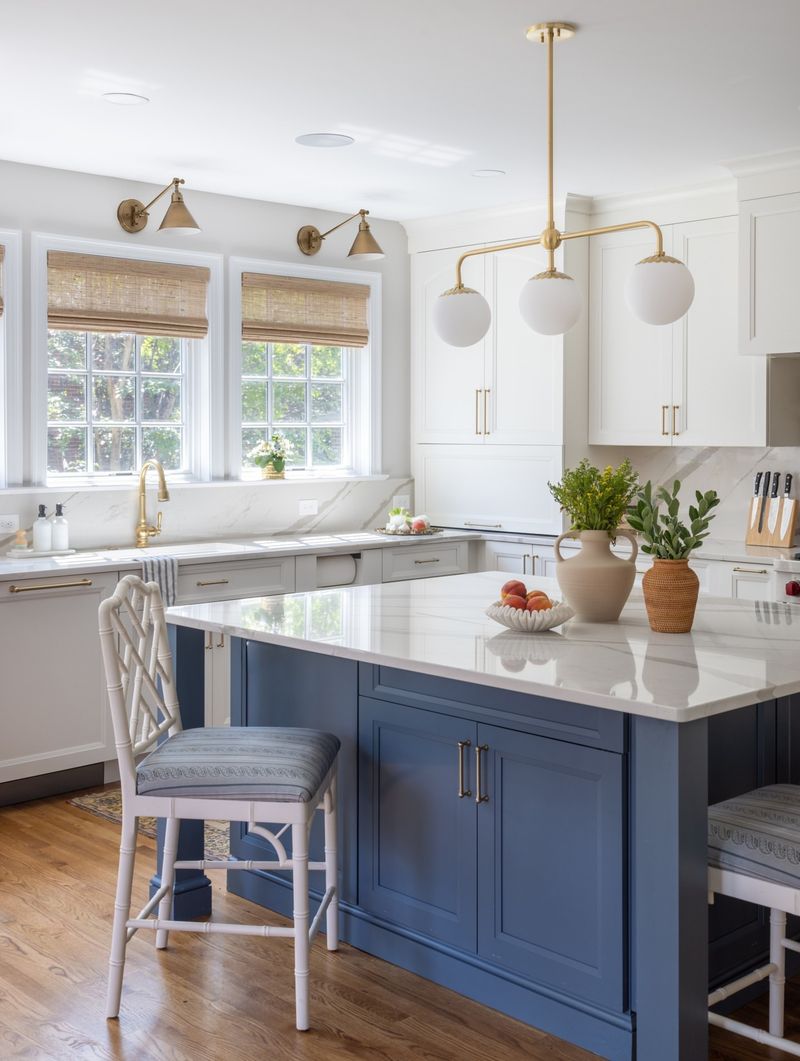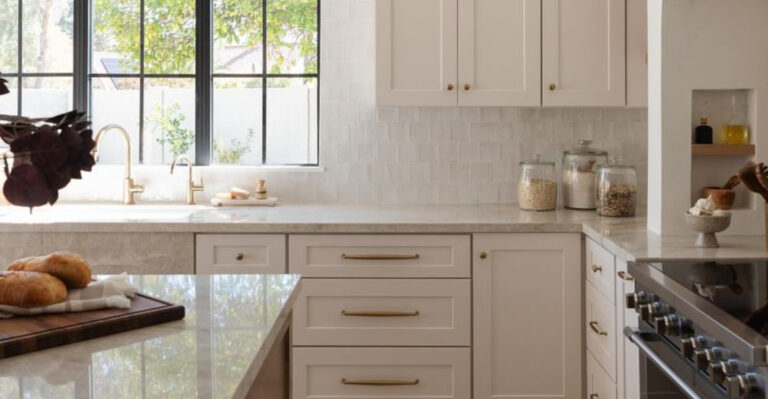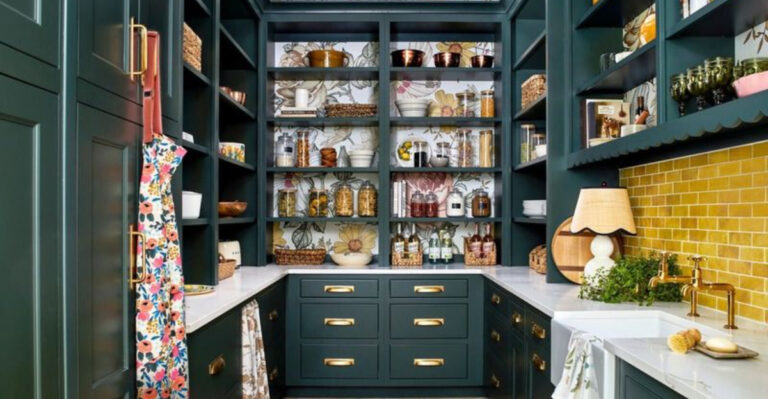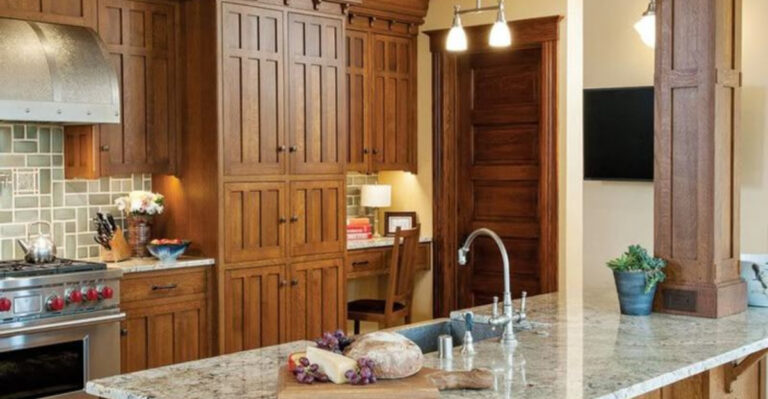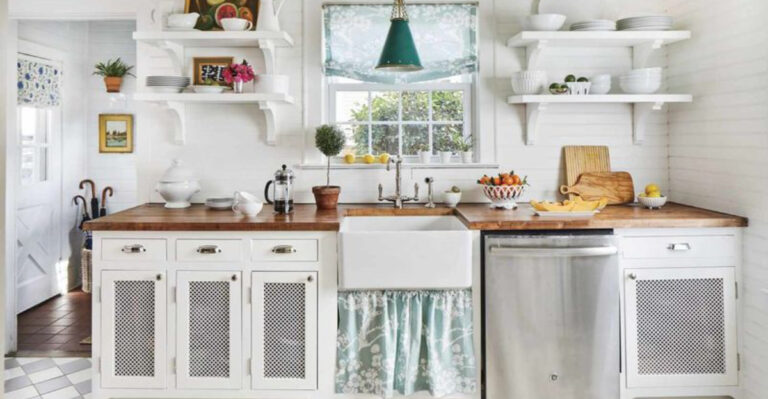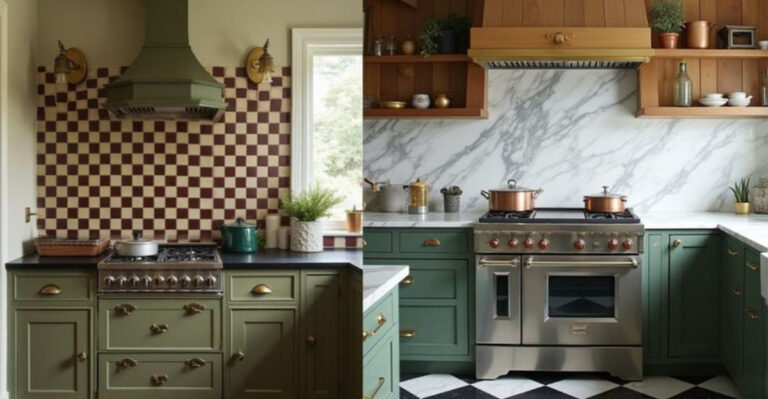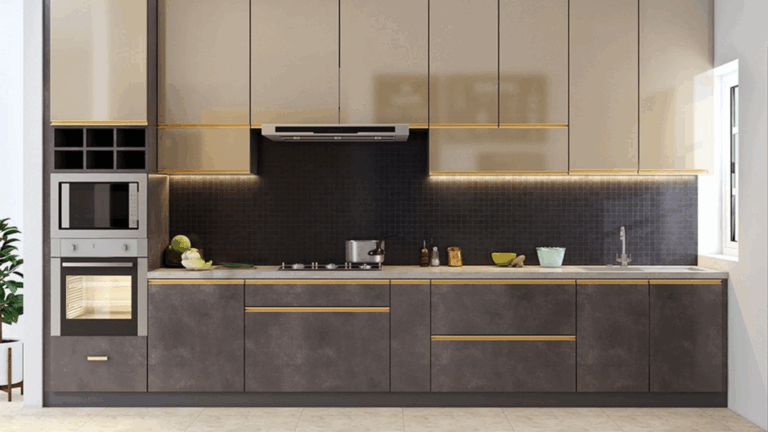31 Failsafe Formulas Designers Always Use When Designing A Kitchen
Designing a kitchen can be an intricate task, filled with endless choices and considerations. However, there are certain tried-and-true formulas that designers rely on to create functional and beautiful spaces.
Whether you’re renovating or starting from scratch, these 31 failsafe formulas will steer you in the right direction. From layout strategies to material choices, each formula offers unique insights to elevate your kitchen design.
Let’s explore these guiding principles to transform your culinary space into a masterpiece, where style meets efficiency.
1. The Classic Work Triangle
First and foremost, the work triangle is timeless. It ensures effortless movement between the stove, sink, and refrigerator, optimizing efficiency.
Think of it as the kitchen’s backbone, facilitating a smooth workflow while cooking. By maintaining equal distances between these key areas, you enhance functionality.
Therefore, if you’re planning a layout, prioritize this configuration. It promises a harmonious balance between utility and aesthetics, making daily tasks seamless.
2. Maximized Storage Solutions
Moreover, storage can make or break a kitchen’s usability. Designers always emphasize maximizing storage spaces.
Upper cabinets reaching the ceiling, deep drawers, and clever corner solutions are must-haves. These elements ensure every item has its place.
However, balance is key. Avoid overcrowding the space, allowing for easy access and a clean look. Storage solutions should enhance the kitchen’s functionality without overwhelming it.
3. Open Shelving Charm
Open shelving adds character and accessibility. It’s a designer favorite for displaying beautiful dishware and adding a personal touch.
Though it requires organization, it invites creativity and makes frequently used items easily reachable. A mix of textures and colors can make it visually appealing.
If you love showcasing your collection, this is a great option. However, balance is crucial to avoid a cluttered appearance.
4. Integrated Appliances
Integrated appliances offer a sleek and cohesive look. They blend seamlessly with the cabinetry, creating a minimalist aesthetic.
This approach is ideal for modern kitchens where clean lines and simplicity are desired. It prevents visual clutter and maintains an open feel.
Additionally, integrated appliances can be customized to match your kitchen’s design, enhancing its overall harmony.
5. The Right Lighting Mix
Lighting is pivotal in setting the kitchen’s mood and functionality. A mix of ambient, task, and accent lighting creates a balanced atmosphere.
Pendant lights over islands, under-cabinet lighting, and chandeliers contribute to both aesthetics and utility.
Therefore, consider a layered lighting approach to enhance the kitchen’s appeal and make it inviting. Proper lighting transforms the space into a warm, functional environment.
6. Color Palette and Contrast
Color schemes define a kitchen’s ambiance. Designers often play with contrasts to add depth and interest.
For instance, pairing dark cabinets with light countertops creates a dramatic yet balanced look. It’s about mixing tones and textures to make the space lively.
If you’re adventurous, experiment with bold colors. Just ensure they complement each other, maintaining harmony in your design.
7. Durable Countertop Materials
Countertop materials are crucial for longevity and style. Granite, quartz, and marble are popular choices due to their durability and elegance.
These surfaces withstand daily wear while adding a touch of luxury. Selecting the right material enhances both functionality and aesthetics.
In addition, consider maintenance requirements. Some materials may need sealing or specific care to retain their beauty over time.
8. Backsplash as a Focal Point
The backsplash can elevate a kitchen’s design significantly. It’s an opportunity to add color, texture, and personality.
A well-chosen backsplash acts as a focal point, drawing attention and adding flair. Whether it’s classic subway tiles or intricate mosaics, the options are endless.
Thus, don’t overlook this element. It’s a canvas for creativity, allowing you to express personal style while enhancing the kitchen’s overall appeal.
9. Efficient Ventilation System
Ventilation is vital for a healthy kitchen environment. A robust system removes smoke, odors, and excess heat.
Range hoods are essential in maintaining air quality and comfort. They not only serve a functional purpose but can also be a stylish addition.
When selecting a ventilation system, prioritize efficiency and design. It ensures the kitchen remains fresh and inviting.
10. Thoughtful Island Design
Islands are more than just additional counters. They can serve multiple functions, from prep space to dining areas.
Incorporating sinks or cooktops can enhance their utility, making them central to the kitchen’s layout. Consider the island’s size and position carefully.
Thus, a thoughtfully designed island becomes a versatile asset, blending functionality with style and becoming a gathering spot for family and friends.
11. Ergonomic Layout Considerations
Ergonomics play a crucial role in kitchen design. Layouts should facilitate ease of movement and access.
Designers focus on aligning counters and cabinets at comfortable heights, ensuring everything is within reach. This approach reduces strain during cooking and cleaning.
If comfort is a priority, integrate these ergonomic principles. They contribute to a healthier, more efficient kitchen experience.
12. Eco-Friendly Material Choices
Sustainability is increasingly important in kitchen design. Eco-friendly materials offer both style and environmental benefits.
Bamboo, reclaimed wood, and recycled glass are popular choices. They minimize environmental impact while providing unique textures and finishes.
Hence, when selecting materials, consider their ecological footprint. It’s a conscious choice that supports sustainable living.
13. Smart Technology Integration
Technology can transform a kitchen into a smart, efficient space. Integrating smart appliances and systems enhances convenience.
Touchscreen fridges, automated lighting, and voice-controlled devices streamline daily tasks. This integration makes the kitchen more responsive and adaptable.
Therefore, explore smart technology options to modernize your kitchen. It’s an investment in convenience and innovation.
14. Personalized Touches and Accents
Personalization adds warmth and character to a kitchen. Designers often incorporate unique elements that reflect the homeowner’s style.
Custom hardware, bespoke light fixtures, and curated decor pieces make the space feel intimate and special.
When designing, think about adding these personal touches. They transform the kitchen into a space that resonates with your personality and lifestyle.
15. Flexible Dining Options
Versatility in dining arrangements is a boon. Designers often incorporate flexible solutions that adapt to different needs.
Foldable tables, extendable counters, and movable chairs provide adaptability, accommodating various occasions and gatherings.
If you value versatility, consider these options. They ensure your kitchen remains functional and ready for any situation.
16. Clever Corner Utilization
Corners often pose challenges in kitchen design. However, designers have clever ways to utilize these areas efficiently.
Pull-out shelves, lazy Susans, and corner drawers maximize storage and accessibility in tight spots. They turn underutilized spaces into practical solutions.
Thus, don’t neglect corners. With the right solutions, they can significantly enhance your kitchen’s functionality.
17. Harmonious Texture Blending
Textures bring depth to a kitchen’s design. Blending different materials creates visual interest and balance.
Smooth marble, rustic wood, and matte metals can coexist beautifully, adding layers to the design. It’s about finding the right combination that speaks to your taste.
If you enjoy experimenting, play with textures. They enrich the space, making it more dynamic and inviting.
18. Flooring That Complements
Flooring sets the foundation for the kitchen’s overall look. It should complement the cabinetry and decor harmoniously.
Hardwood, tiles, and polished concrete are popular choices for their durability and style. The key is to ensure they enhance the kitchen’s aesthetic.
Therefore, consider the flooring’s texture, color, and finish. It plays a crucial role in the kitchen’s design narrative.
19. The Magic of Mirrors
Mirrors can transform a kitchen by reflecting light and creating an illusion of more space. They are a designer’s secret weapon for small kitchens.
A mirrored backsplash or accents can brighten up the area, making it feel larger and more open. It’s a clever way to enhance the ambiance.
Thus, if light and space are concerns, consider integrating mirrors. They add a touch of elegance while boosting functionality.
20. Incorporating Natural Elements
Bringing nature indoors adds serenity and warmth. Designers love incorporating natural elements like stone, wood, and plants.
These elements create a tranquil atmosphere, connecting the kitchen with the outdoors. It’s about blending functionality with a touch of nature.
Consider adding these elements for a refreshing vibe. They enhance the space, contributing to a peaceful and inviting kitchen.
21. Timeless Cabinet Styles
Cabinet styles define the kitchen’s character. Timeless options like shaker or flat-panel designs offer enduring appeal.
These styles are versatile, fitting both traditional and modern kitchens. They provide a clean, uncluttered look while maximizing storage.
Therefore, when choosing cabinets, consider timeless designs. They ensure your kitchen remains stylish and functional for years.
22. Artful Integration of Artworks
Art brings personality and vibrancy to a kitchen. Designers often incorporate pieces that complement the overall theme.
Whether it’s a vibrant painting or a sculpture, artwork can make the space feel curated and unique. It becomes a focal point, drawing interest and admiration.
Therefore, think about integrating art into your kitchen. It adds a layer of sophistication and personal expression.
23. Seamless Indoor-Outdoor Flow
Creating a seamless transition between indoor and outdoor spaces can elevate a kitchen’s design. Large glass doors or windows enhance this connection.
They invite natural light and provide easy access to outdoor areas, perfect for entertaining or enjoying nature.
Thus, if space allows, consider this integration. It expands the kitchen’s function and enhances its appeal.
24. The Allure of Metallic Accents
Metallic accents add a touch of luxury and warmth to a kitchen. Brass, copper, and stainless steel can be used creatively.
From fixtures to decor elements, these metals introduce shine and elegance. They complement various styles, from industrial to classic.
Thus, explore metallic accents to enrich your kitchen’s decor. They bring a chic, polished finish to the overall design.
25. The Role of Rugs
Rugs introduce comfort and style to a kitchen, especially in open-plan spaces. They define areas and add warmth underfoot.
Colorful patterns or subtle designs can complement the kitchen’s theme, providing a soft touch to hard floors.
Therefore, consider a well-placed rug to enhance your kitchen. It’s a simple addition that contributes to a cozy and inviting atmosphere.
26. Innovative Use of Space
Space innovation is crucial in modern kitchen design. Designers focus on maximizing every inch with multifunctional furniture.
Pull-out tables, hideaway stools, and built-in storage solutions transform compact spaces into efficient kitchens.
Thus, if space is limited, explore innovative solutions. They ensure the kitchen remains functional and stylish, regardless of size constraints.
27. Customized Ceiling Designs
Ceilings often go unnoticed, but creative designs can add architectural interest. Coffered or beamed ceilings introduce depth and elegance.
Recessed lighting or decorative panels can further enhance the design, making the ceiling a focal point.
Therefore, look up and consider ceiling customization. It’s an opportunity to add character and sophistication to your kitchen.
28. The Power of Plants
Plants bring life and freshness into a kitchen. They purify the air and add a splash of color.
Herbs on windowsills, hanging planters, or potted plants on shelves make the space feel lively and vibrant.
Thus, don’t hesitate to incorporate greenery. It’s an easy way to enhance the kitchen’s ambiance and connect with nature.
29. The Beauty of Balance
Symmetry brings balance and harmony to a kitchen’s design. It creates a sense of order and calmness.
Aligning key elements, such as cabinets and fixtures, ensures the space feels cohesive and thoughtfully arranged.
Therefore, consider symmetry in your design. It enhances the kitchen’s aesthetic by creating a balanced and harmonious environment.
30. Accent Walls with Personality
Accent walls add personality and depth to a kitchen. A splash of color or pattern can transform a plain space into something extraordinary.
Geometric designs, bold colors, or textured finishes make the accent wall a focal point, drawing attention and admiration.
Thus, explore the idea of an accent wall. It’s a creative way to infuse your kitchen with character and style.
31. Efficient Traffic Flow Design
Traffic flow is crucial in kitchen design. Ensuring clear pathways between key areas makes navigation effortless.
Designers focus on minimizing obstacles and allowing free movement, especially in busy kitchens.
Therefore, prioritize traffic flow in your layout. It enhances the kitchen’s functionality, making it user-friendly and efficient.

